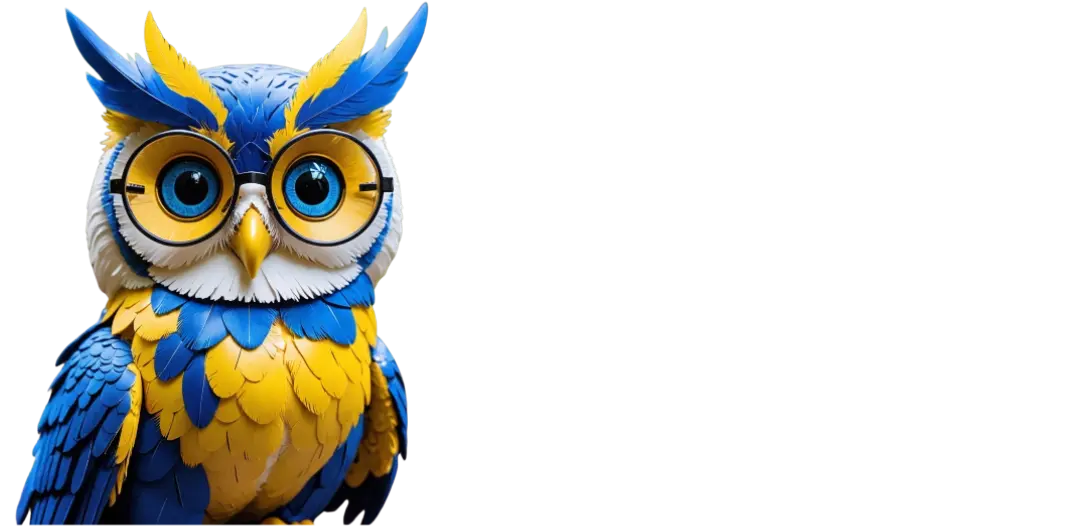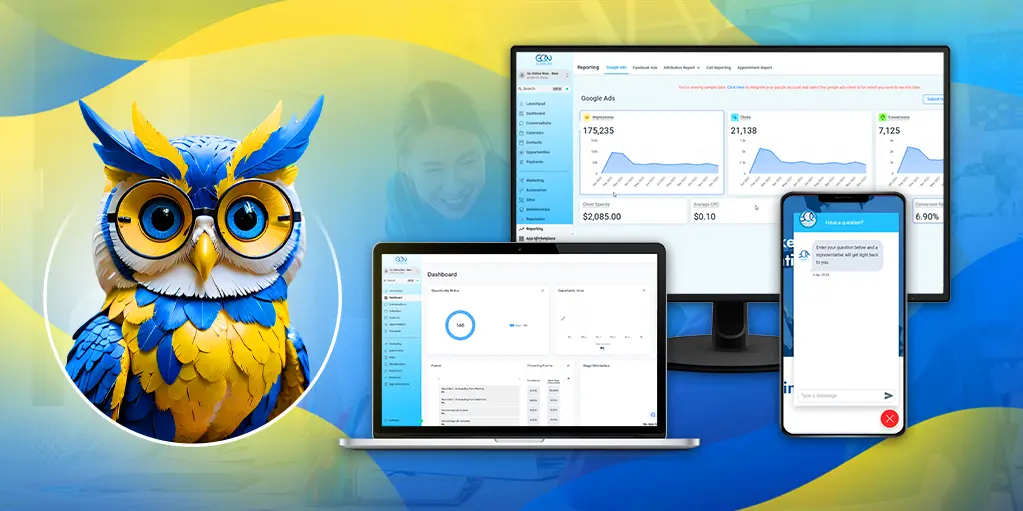Social media has become an indispensable tool for businesses seeking to reach and engage with their target audience in today’s digital age. Social media marketing, with billions of active users on platforms such as Facebook, Instagram, Twitter, and LinkedIn, presents a tremendous opportunity for businesses to promote their products and services, build brand awareness, and foster meaningful relationships with their customers. To maximize the potential of social media, businesses must set realistic and attainable goals that align with their overall marketing objectives.
In this comprehensive guide, we will look at how to set effective social media goals and use key performance indicators (KPIs) to track success and make data-driven decisions.
Understanding the Foundation: Defining Your Social Media Strategy
Before diving into the realm of setting goals and tracking progress, a solid social media strategy must be established. A well-defined strategy serves as a compass, guiding your social media marketing efforts to success. Begin by identifying your target audience, researching their social media habits, and understanding their preferences. This knowledge will assist you in selecting the best platforms for your company.
1. Selecting the Best Platforms
- Instagram: Instagram marketing is ideal for visually-driven businesses and B2C brands looking to highlight their products or services.
- Facebook Ads: Provides highly targeted ad campaigns for businesses looking to reach a large number of consumers.
- Twitter promotion: Twitter promotion is effective for real-time interaction and news-related content.
- LinkedIn campaigns: LinkedIn campaigns are excellent for business-to-business marketing and professional networking. Setting Specific, Measurable, Achievable, Relevant, and Time-Bound
2. Goals:
Define specific, measurable, achievable, relevant, and time-bound (SMART) goals for your social media campaigns. Common goals include raising brand awareness, increasing website traffic, generating leads, and increasing sales.
3. Using Social Media Advertising
Social media advertising supplements organic efforts by allowing businesses to target specific demographics, interests, and behaviors. Budget for paid campaigns and incorporate them into your overall strategy.
The Importance of Realistic Social Media Goals
In the ever-changing social media landscape, it’s easy to fall into the trap of setting unrealistic goals motivated by a desire for quick success. However, such goals can be counterproductive, resulting in disappointment and a waste of resources. Instead, concentrate on setting attainable goals that reflect your company’s unique needs and capabilities.
Questions to Consider When Defining Social Media Objectives:
- What is your current online presence?
- What are your ultimate business goals?
- Are your objectives specific and measurable?
- Are Your Objectives Achievable?
- Do your objectives correspond to the needs of your target audience?
- Have You Investigated Your Competitors?
- What is your current online presence? To determine your starting point, evaluate your current social media performance. To gain insights into your audience’s behavior, track metrics such as follower count, engagement rates, click-through rates (CTR), and reach.
- What are your ultimate business goals? Align your social media objectives with your overall marketing and business goals. Determine how social media can help you increase revenue, improve customer satisfaction, or boost your brand reputation.
- Are your objectives specific and measurable? Goals such as “get more followers” will not provide a clear direction for your efforts. Rather, set goals such as “increase Instagram followers by 20% in three months.”
- Are Your Objectives Achievable? Consider your available resources, team capabilities, and the time frame in which you plan to achieve your objectives. Setting unrealistic goals can lead to frustration and burnout.
- Do your objectives correspond to the needs of your target audience? Understanding your audience’s pain points, interests, and preferences will allow you to create goals that will resonate with them and, in turn, drive engagement.
- Have You Investigated Your Competitors? Examine the social media strategies of your competitors to identify opportunities and potential pitfalls. This research can help you set goals and differentiate yourself in the market.
The Role of Key Performance Indicators (KPIs)
After you’ve defined your social media objectives, it’s time to identify the key performance indicators (KPIs) that will serve as quantifiable benchmarks for measuring your progress. KPIs can help you make data-driven decisions and optimize your social media efforts by providing valuable insights into the effectiveness of your efforts.
Important Social Media KPIs:
1. Metrics of Engagement:
- Likes, comments, shares, and retweets show how well your content is received by your target audience.
- The click-through rate (CTR) is the percentage of users who followed the link in your content to your website or landing page.
2. Follower Development:
Tracking the growth of your follower count on each platform allows you to assess the attractiveness and appeal of your brand.
3. Impressions and Reach:
The number of unique users who saw your content is represented by reach, while the total number of views is represented by impressions. Examining these metrics can help you determine the visibility of your content.
4. Rates of Conversion:
Calculate the percentage of users who completed the desired action after interacting with your social media content, such as filling out a form, purchasing something, or subscribing to your newsletter.
5. Referral Traffic from Social Media:
Analyze the amount of website traffic generated by your social media platforms to determine how effective your content is at driving visitors to your site.
6. Customer Attitude:
Monitor brand mentions, comments, and direct messages to determine how customers perceive your brand and respond quickly to any negative feedback.
Monitoring Progress and Making Data-Informed Decisions
Tracking Progress and Making Data-Driven Decisions
Analyze the amount of website traffic generated by your social media platforms to determine how effective your content is at driving visitors to your site. Monitor brand mentions, comments, and direct messages to determine how customers perceive your brand and respond quickly to any negative feedback.
Monitoring Progress and Making Data-Informed Decisions
Customer Attitude:
Monitoring your social media analytics on a regular basis is critical for tracking progress toward your goals and identifying areas for improvement. Various social media management tools provide in-depth analysis of your performance, audience demographics, and content effectiveness.
- Establish a routine for reviewing your social media analytics, such as weekly or monthly reports, and stick to it. This practice allows you to track your progress and identify trends over time.
- A/B Testing: Experiment with various content formats, posting times, and messaging to see what works best for your audience. A/B testing allows you to improve the effectiveness of your content and strategy.
- Incorporate High-Performing Content Lessons: Analyze your best-performing content from both organic and paid campaigns. Identify patterns and themes that your audience resonates with and incorporate these insights into future content creation.
- Adjust Your Strategy as Needed: If your objectives are not being met despite your best efforts, be willing to change your strategy. This adaptability ensures that you can respond to shifting audience preferences and platform algorithms.
Tracking Progress and Making Data-Driven Decisions
Monitoring your social media analytics on a regular basis is critical for tracking progress toward your goals and identifying areas for improvement. Various social media management tools provide in-depth analysis of your performance, audience demographics, and content effectiveness.
- Establish a routine: Establish a routine for reviewing your social media analytics, such as weekly or monthly reports, and stick to it. This practice allows you to track your progress and identify trends over time establish a routine for reviewing your social media analytics, such as weekly or monthly reports, and stick to it.
- A/B Testing: Experiment with various content formats, posting times, and messaging to see what works best for your audience. A/B testing allows you to improve the effectiveness of your content and strategy.
- Incorporate High-Performing Content Lessons: Analyze your best-performing content from both organic and paid campaigns. Identify patterns and themes that your audience resonates with and incorporate these insights into future content creation.
- Adjust Your Strategy as Needed: If your objectives are not being met despite your best efforts, be willing to change your strategy. This adaptability ensures that you can respond to shifting audience preferences and platform algorithms.
Influencer Marketing and Viral Content
Viral Content and Influencer Marketing: Influencer marketing and viral content, in addition to organic and paid efforts, can have a significant impact on your social media performance.
- Influencer Marketing: By collaborating with relevant influencers, you can tap into their established audiences while also leveraging their credibility. Choose influencers whose values align with yours and whose followers correspond to your target demographic.
- Creating Viral Content: While virality cannot be predicted, creating shareable content can increase your chances. Concentrate on producing useful, entertaining, or emotionally resonant content that encourages sharing.
The Power of Social Media Engagement
Social media engagement is more than just vanity metrics like likes and followers. It represents the depth of your brand’s connection with its audience.
- Respond to Audience Interactions: Whether it’s responding to comments, answering direct messages, or addressing concerns, engage with your audience as soon as possible. Creating a dialogue increases trust and loyalty.
- Encourage User-Generated Content (UGC): UGC is a powerful tool for increasing the presence and authenticity of your brand. Encourage your followers to share their brand-related experiences, testimonials, and creative content. Reposting UGC not only fosters a sense of community, but it also highlights the value your customers place on your products or services.
- Organize Contests and Giveaways: Contests and giveaways are great ways to increase engagement and attract new followers. Consider holding creative contests in which participants must share their content or come up with innovative brand-related ideas. Giveaways can encourage people to follow, share, and interact with your content, increasing its visibility.
- Use Live Video: Live videos are an excellent way to interact with your audience in real-time. This feature can be used to host Q&A sessions, product demonstrations, behind-the-scenes peeks, and exclusive announcements. Live videos frequently generate higher engagement because viewers can interact in real-time through comments and reactions.
Assessing Your Social Media Strategy: Adjusting and Scaling
As your social media marketing efforts progress, you’ll need to evaluate your results and adjust your strategy as needed. The social media landscape is ever-changing, with platform algorithms and user behaviors constantly evolving. Staying ahead of the curve requires flexibility and adaptability.
- Analyze Performance Data: Review your social media analytics and KPIs on a regular basis to identify patterns and trends. Compare your results to your predefined goals to determine where you stand in relation to your objectives.
- Identify Opportunities for Improvement: Identify your social media strategy‘s strengths and weaknesses. Recognize which content and tactics are working well and which need to be improved.
- Iterate and optimize: Make informed decisions about which aspects of your strategy need to be tweaked based on your data-driven insights. This could include tweaking your content, changing your posting schedule, or reallocating your budget to more successful campaigns.
- Scale Successful Campaigns: When you identify a successful strategy or campaign, consider scaling it to reach a larger audience or applying it across multiple platforms. Scaling successful campaigns can assist you in maintaining momentum and maximizing ROI.
- Keep Up with Social Media Trends: The social media landscape is constantly evolving, and new features, trends, or algorithms can have a significant impact on your performance. Keep up to date on industry developments and be ready to adjust your strategies as needed.
- Maintain Authenticity and Customer-Centricity: Regardless of how the social media landscape changes, remember that authenticity and customer-centricity are critical. Concentrate on establishing genuine connections with your audience and providing value through your content.
Conclusion
A successful marketing strategy is built on setting realistic and attainable social media goals. You can accurately measure your success and make data-driven decisions by understanding your audience, defining specific objectives, and tracking your performance with relevant KPIs. Remember that social media marketing is about cultivating meaningful relationships with your customers and developing a strong online presence, not just numbers.
Reassess and adjust your strategies on a regular basis, while remaining true to your brand’s voice and values. Use social media engagement, influencer marketing, and viral content to expand your reach and impact. As you navigate the ever-changing social media landscape, keep in mind that success is not always immediate, but with perseverance and a well-crafted strategy, your efforts will pay off in the long run for your company.
In the fast-paced world of social media, staying up to date on the latest trends and adapting your approach as needed is critical. Accept the journey of continuous improvement, and your social media presence will become a valuable asset in helping you achieve your business objectives. So, one post at a time, go forth and make meaningful connections with your audience!





